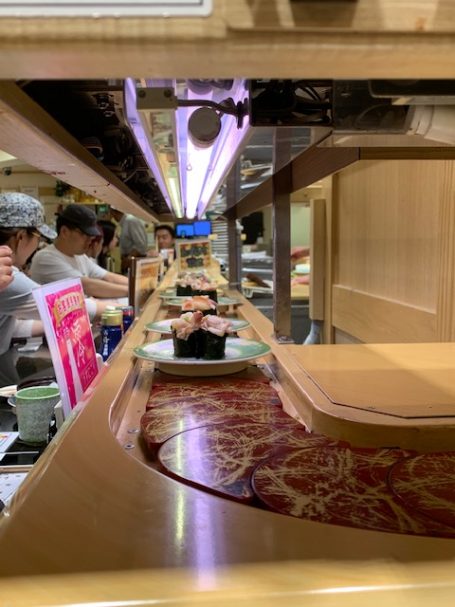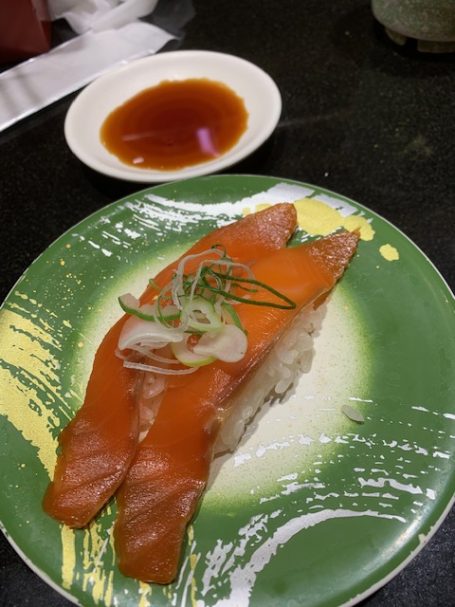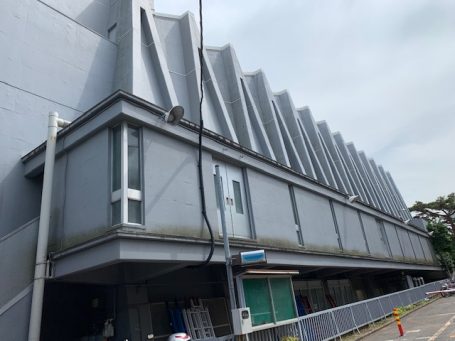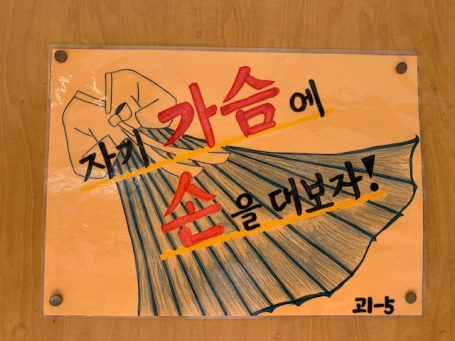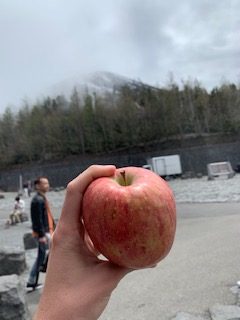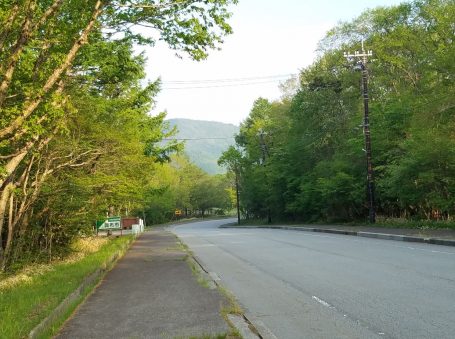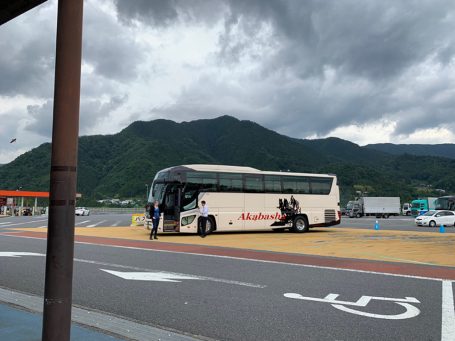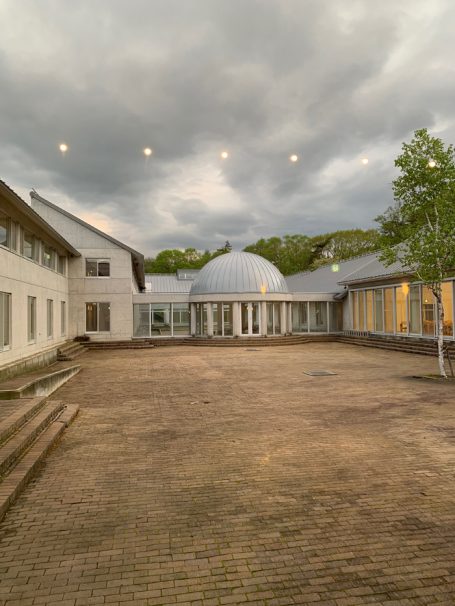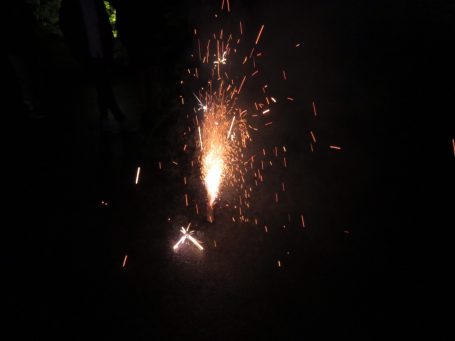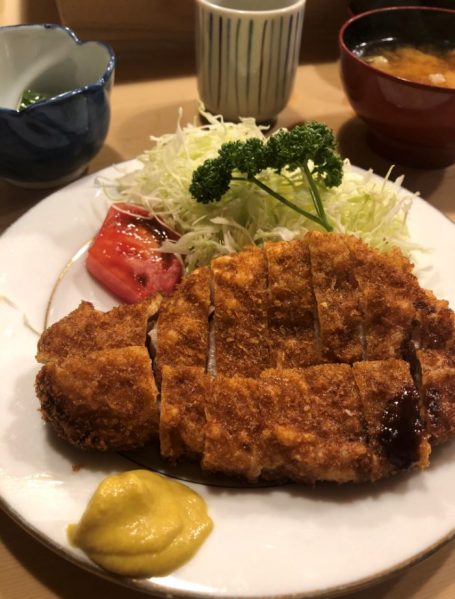By: Shon Xiao
Hi! I’m Shon, a rising junior at USC. It’s been such a good three weeks here in Japan with the USC and Meiji students, it’s hard to believe it came to an end. In all honesty, the fact that it’s over still has yet to hit me, even though I’m already out of Japan while I’m writing this.
Our last day in Japan was a bit hectic, needless to say, but was still a wonderful memory. Around noon, Joe and I went to TeamLab Borderless, a recently established digital art museum with marvelous displays that constantly change as the day goes on. The museum had several rooms, most of them hidden behind curtains that blend into the wall. The sheer scale of the displays in the museum made the experience ethereal.

Projectors cast glowing displays on makeshift lily pads at TeamLab.
Joe and I returned to Sakura Hotel with only a little time before the Farewell Party at Meiji University. All of us USC students gathered in the café at Sakura to write cards for the Meiji supporters. Thanks to Jessica and Thomas, who organized the card-writing and bought the materials, each pair of USC students wrote a letter for each of their Meiji supporters. Krystal and I wrote messages for our supporters Ara-chan, Yuto, and Mizuki. I was lucky enough to bond with these three over the course of the program, particularly during the Kiyosato retreat. I also wrote a few letters for other Meiji supporters I bonded with to show my thanks. With only ten or so minutes before the Farewell Party, I regret not being able to buy more gifts and write more letters for the Meiji students. I definitely left out a few people that I was lucky to meet.
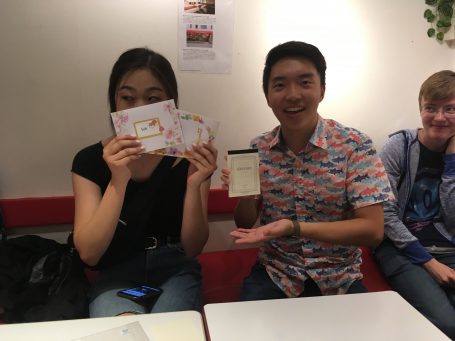
Taryn and Kenny showing off their beautiful letters.
The Farewell Party truly made the trip feel like it had come full circle, being held in the 23rd floor of Liberty Tower. We cheered, much like on the first day of the program, and began feasting. After finishing our meals, we heard several speeches from faculty and students from both USC and Meiji, all expressing messages along the lines of ‘time flew by fast, but we will never forget this experience.’ I’m sure that many of us resonated with this message. It was strange acknowledging that the program was coming to an end and that we would soon split apart and go our separate ways.
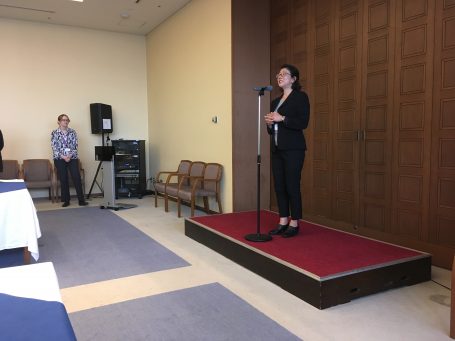
Professor Katada giving a speech at the Farewell Party.
After the speeches, the USC students and Meiji supporters exchanged gifts. USC students gave letters while Meiji supporters gave shikishi, a small board filled with messages from each Meiji supporter. It was so moving to see the amount of effort they put into their present and all the sweet messages written on the board. I promised them I’d treasure the gift forever and place it on my desk.
Unfortunately, many Meiji supporters were unable to make the Farewell Party because they still had classes to attend. However, the majority of the Meiji supporters made it to the second party that Tatsuya so kindly organized for us. I was happy to be able to say a final goodbye to all the Meiji students. We sang, danced, and overall had a wonderful time. I was able to bond even more with a few supporters.

USC and Meiji students celebrating at the second party.
In the middle of the second party, I stepped out onto the smoking terrace to get some fresh air. Out of curiosity and whim, I followed the stairs up to the roof of the building. There was a view of a quiet neighborhood of Tokyo, and I could faintly hear the blaring music and singing voices from downstairs. Detached from the party scene, I was really able to take in the moment and say a final farewell to the city of Tokyo. Or, at least, a final farewell to the program. I spent my time up on the roof reflecting on my time here and the friends I’ve made, despite not expecting to. I came into this program with little to no expectations in fear of being disappointed, but EASC Japan has been more than I could have hoped for. I’ve come to Japan once before, but for the first time I became close friends with Japanese locals and learned about more niche Japanese minority groups. While it’s bittersweet to say goodbye to Japan, I know for sure that I am coming back to learn even more. Thank you, GEA Japan, for giving me this opportunity to experience Japan in a unique setting. Time flew by fast, but I will never forget this experience.

Night view of a quiet street in Tokyo. I’ll miss these clean streets and tall buildings.
Thank you, Japan!



